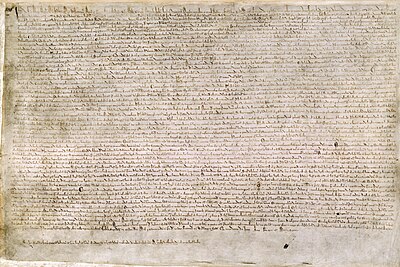
Back Vitela AN ورق الرق Arabic Вялень (матэрыял) BE Велен (пергамент) Bulgarian Leuegen BR Vitel·la Catalan Velin Danish Vellum German Veleno EO Vitela Spanish


Vellum is prepared animal skin or membrane, typically used as writing material. It is often distinguished from parchment, either by being made from calfskin (rather than the skin of other animals),[1] or simply by being of a higher quality.[2] Vellum is prepared for writing and printing on single pages, scrolls, and codices (books).
Modern scholars and experts often prefer to use the broader term "membrane", which avoids the need to draw a distinction between vellum and parchment.[2][3]: 9–10 It may be very hard to determine the animal species involved (let alone its age) without detailed scientific analysis.[4]
Vellum is generally smooth and durable, but there are great variations in its texture which are affected by the way it is made and the quality of the skin. The making involves the cleaning, bleaching, stretching on a frame (a "herse"), and scraping of the skin with a crescent-shaped knife (a "lunarium" or "lunellum"). To create tension, the process goes back and forth between scraping, wetting and drying. Scratching the surface with pumice, and treating with lime or chalk to make it suitable for writing or printing ink can create a final look.[1]
Modern "paper vellum" is made of plant cellulose fibers and gets its name from its similar usage to actual vellum, as well as its high quality. It is used for a variety of purposes including tracing, technical drawings, plans and blueprints. Tracing paper is essentially the same thing, however the quality level differs, sometimes greatly. [5][6][7]
- ^ a b "Differences between Parchment, Vellum and Paper". archives.gov. Retrieved 2016-06-16.
- ^ a b Stokes, Roy Bishop; Esdaile, Arundell James Kennedy (2001). Almagno, Stephen R. (ed.). Esdaile's manual of bibliography (6 ed.). Lanham, Md.: Scarecrow Press. p. 114. ISBN 978-0-8108-3922-9.
- ^ Clemens, Raymond; Graham, Timothy (2007). Introduction to Manuscript Studies. Ithaca: Cornell University Press. ISBN 978-0-8014-3863-9.
- ^ Cains, Anthony (1994). "The surface examination of skin: a binder's note on the identification of animal species used in the making of parchment". In O'Mahony, Felicity (ed.). The Book of Kells: proceedings of a conference at Trinity College Dublin, 6–9 September 1992. Aldershot: Scolar Press. pp. 172–174. ISBN 0-85967-967-5.
- ^ Hepler, Wallach & Hepler 2012, pp. 60–61.
- ^ "Japanese vellum – Cameo". cameo.mfa.org. Archived from the original on 2017-09-03. Retrieved 2017-09-03.
- ^ "How Modern Day Vellum Stationery Is Produced". The Note Pad | Stationery & Party Etiquette Blog by American Stationery. 2011-07-04. Archived from the original on 2017-09-03. Retrieved 2017-09-03.